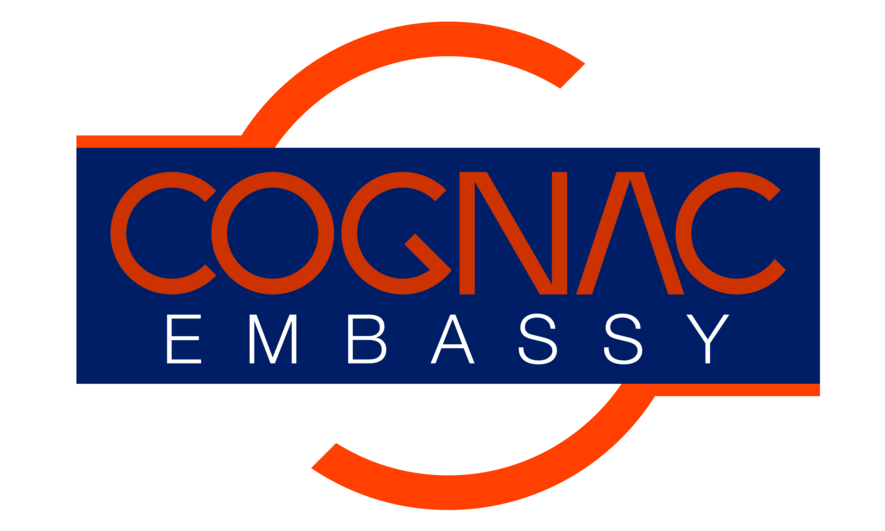Selected General Management Terms:
Source: www.balancedscorecard.org
Mainly US-AMERICAN terminology
Some of these definitions were obtained from US federal government agencies such as the Office of Management and Budget (OMB) or the Government Accountability Office (GAO); some were obtained from other authorities.
Abbreviatons: Government Accountability Office (GAO) is the audit, evaluation, and investigative arm of the United States Congress.
OMB: Office of Management and Budget, a group that oversees the activities of federal agencies in the White House.
Activity-Based Costing (ABC): A business practice (invented by Dr. Robert Kaplan of Harvard, who also invented the balanced scorecard) in which costs are tagged and accounted in detailed activity categories, so that return on investment and improvement effectiveness can be evaluated. Implementing ABC requires proper data structures and an adequate data collection and reporting systems (such as ERP) involving all employees in the activity.
Balanced Scorecard: A measurement-based strategic management system, originated by Robert Kaplan and David Norton, which provides a method of aligning business activities to the strategy, and monitoring performance of strategic goals over time.
Balance sheet:
A Balance Sheet is a financial statement of a business or institution that lists assets, debts, investments, and net worth
The Balance Sheet content pack provides Indicators and Dashboards to create a Balance Sheet. This includes for example:
- Liabilities
- Inventory
- Assets
- Equity
- Cash, Current & Quick ratio
Benchmarking: The process of comparing one set of measurements of a process, product or service to those of another organization. The objective of benchmarking is to set appropriate reliability and quality metrics for your company based on metrics for similar processes in other companies.
Business case: A structured proposal for business improvement that functions as a decision package for organizational decision-makers. A business case includes an analysis of business process performance and associated needs or problems, proposed alternative solutions, assumptions, constraints, and a risk-adjusted cost-benefit analysis.
Core competency: A distinctive area of expertise of an organization that is critical to its long term success. These are built up over time and cannot be imitated easily. The concept was developed by C.K. Prahalad and G. Hamel in a series of articles in Harvard Business Review around 1990. Sometimes called core capability.
Cost-benefit analysis: A technique used to compare the various costs associated with an investment with the benefits that it proposes to return. Both tangible and intangible factors should be addressed and accounted for.
Dashboards - management information systems /
D: Kennzahlen-Cockpit, f. tableau de bord de gestion ;
In management information systems, a dashboard is an executive information system user interface that (similar to an automobile's dashboard) is designed to be easy to read. For example, a product might obtain information from the local operating system in a computer, from one or more applications that may be running, and from one or more remote sites on the Web and present it as though it all came from the same source.[1] Dashboards should not be confused with scorecards.
There are dashboard solutions for: Finance, HR, Web-Analytics, Sales, Marketing, IT, Support…
Earned Value Management: Earned value is a project management technique that relates resource planning to schedules and to technical cost and schedule requirements. All work is planned, budgeted, and scheduled in time-phased ''planned value'' increments constituting a cost and schedule measurement baseline. There are two major objectives of an earned value system: to encourage contractors to use effective internal cost and schedule management control systems; and to permit the customer to be able to rely on timely data produced by those systems for determining product-oriented contract status.
Effectiveness: (a) Degree to which an activity or initiative is successful in achieving a specified goal; (b) degree to which activities of a unit achieve the unit's mission or goal. ((opposite: virtual))
Efficiency: (a) Degree of capability or productivity of a process, such as the number of cases closed per year; (b) tasks accomplished per unit cost.
EFQM: The European Foundation for Quality Management's Model of Excellence, which provides benchmarking and self-assessment
Enterprise: A system of business endeavor within a particular business environment. An enterprise architecture (EA) is a design for the arrangement and interoperation of business components (e.g., policies, operations, infrastructure, information) that together make up the enterprise's means of operation.
Evaluation: Any effort to use assessment evidence or performance measurements to improve organizational effectiveness.
Feedback: Information obtained from the results of a process that is used in guiding the way that process is done. There should be feedback loops around all important activities. Strategic feedback (for each strategic activity) validates effectiveness of the strategy by measuring outcomes (long-term). Diagnostic feedback tracks efficiency of internal business processes (usually generic across all mission activities). Metrics feedback allows for refining the selection of metrics to be measured. Measurement feedback allows for the improvement of measurement techniques and frequency.
Gap Analysis: Gap analysis naturally flows from benchmarking or other assessments. Once we understand what is the general expectation of performance in industry, we can then compare that with current capabilities, and this becomes the gap analysis. Such analysis can be performed at the strategic or operational level of an organization
Goal: A specific intended result of a strategy; often used interchangeably with Objective. See also Outcome Goal, Output Goal, Performance Goal, Strategic Goal. [Note: the term "goal" is used in a wide variety of ways in planning; e.g. as a a task or function to perform, strategic result or outcome; an objective, a measure, a target, a deliverable, a vision, etc. For this reason readers are advised to avoid this term, or else to define it carefully and use it consistently in planning documents.]
Governance: The systems and processes in place for ensuring proper accountability and openness in the conduct of an organization's business. A company's Board of Directors has ultimate responsibility for the governance of a company.
Impact: Changes in outcomes that can be attributed to a particular project, program or policy, in a situation where there may be many other influences on outcomes. Impact evaluation attempts to answer the question, "What would the situation have been if the intervention had not taken place?"
Improvement: An activity undertaken based on strategic objectives such as reduced cycle time, reduced cost, and customer satisfaction. This includes improvements directly in mission activities (production, design, testing etc.) and/or in support activities for the mission.
Indicator: A simple metric that is intended to be easy to measure. Its intent is to obtain general information about performance trends by means of surveys, telephone interviews, and the like.
Input: Resources (funds, labor, time, equipment, space, technology etc.) used to produce outputs and outcomes.
Information technology (IT): Includes all matters concerned with the furtherance of computer science and technology and with the design, development, installation, and implementation of information systems and applications [San Diego State University]. An “information technology architecture” is an integrated framework for acquiring and evolving IT to achieve strategic goals. It has both logical and technical components. Logical components include mission, functional and information requirements, system configurations, and information flows. Technical components include IT standards and rules that will be used to implement the logical architecture.
ISO 9000: ISO, the International Organization for Standardization, has established a series of performance and quality management system standards for industrial organizations. Organizations may receive certification from the ISO Certification body if they are in compliance with the relevant international standards.
| Key Performance Indicators (KPI): A short list of metrics that a company's managers have identified as the most important variables reflecting operational or organizational performance. |
Key Success Factors (KSF): The three to five broad areas on which an organization must focus in order to achieve its vision. They may be major weaknesses that must be fixed before other goals can be achieved. They are not as specific as strategies. Sometimes called strategic themes or critical success factors (CSF).
Measurement: An observation that reduces the amount of uncertainty about the value of a quantity. In the balanced scorecard, measurements are collected for feedback. The measurement system gathers information about all the significant activities of a company. Measurements are the data resulting from the measurement effort. Measurement also implies a methodology, analysis, and other activities involved with how particular measurements are collected and managed. There may be many ways of measuring the same thing.
Metrics: Often used interchangeably with measurements.
However, it may be helpful to separate these definitions.
Metrics are the various parameters or ways of looking at a process that is to be measured. Metrics define what is to be measured. Some metrics are specialized, so they can't be directly benchmarked or interpreted outside a mission-specific business unit. Other metrics will be generic, and they can be aggregated across business units, e.g. cycle time, customer satisfaction, and financial results.
Mission activities: Things that an agency does for its customers. For private companies, profit or value creation is an overarching mission. For nonprofit organizations, the mission itself takes priority, although cost reduction is still usually a high priority activity.
Mission Value: (1) Mission outcome benefits per unit cost; a key metric for nonprofit and governmental organizations. (2) For a collection of missions within an organization, the relative value contributed by each mission. (3) The combination of strategic significance and results produced by a mission.
Model - A representation of a set of components of a process, system, or subject area, generally developed for understanding, analysis, improvement, and/or replacement of the process [GAO]. A representation of information, activities, relationships, and constraints
Organization: The command, control and feedback relationships among a group of people and information systems. Examples: a private company, a government agency.
Outcome: A description of the intended result, effect, or consequence that will occur from carrying out a program or activity.. The end result that is sought (examples: in the private sector, financial profitability; in the public sector, cleaner air or reduced incidence of disease).
Outcome measure: A long-term, ultimate measure of success or strategic effectiveness. An event, occurrence, or condition that is outside the activity or program itself and is of direct importance to customers or the public. We also include indicators of service quality, those of importance to customers, under this category.
Output: Products and services delivered. Outputs are the immediate products of internal activity: the amount of work done within the organization or by its contractors (such as miles of road repaired or number of calls answered).
Performance-based budgeting: A management process in which performance of various activities in an organization is measured, and budgets for further work on these activities is adjusted based on their performance. (Note: this does not necessarily imply that budgets for poorly-performing activities will be reduced;
Performance goal: A target level of performance expressed as a tangible, measurable objective, against which actual achievement can be compared, including a goal expressed as a quantitative standard, value, or rate. (OMB).
Performance indicator: A particular value or characteristic used to measure output or outcome.
Performance measurement: The process of developing measurable indicators that can be systematically tracked to assess progress made in achieving predetermined goals and using such indicators to assess progress in achieving these goals [GAO]. A performance gap is the gap between what customers and stakeholders expect and what each process and related subprocesses produces in terms of quality, quantity, time, and cost of services and products [GAO].
Plan: A prescribed, written sequence of actions to achieve a goal, usually ordered in phases or steps with a schedule and measureable targets; defines who is responsible for achievement, who will do the work, and links to other related plans and goals. By law agencies must have strategic plans, business plans, and performance plans. They may also have implementation plans, program plans, project plans, management plans, office plans, personnel plans, operational plans, etc.
Primary customer: The customer group that must be satisfied if the overall mission of the organization is to succeed. Generally this is the end user or direct recipient of an organization's products or services, and has the capabilities to report satisfaction and give feedback. In a commercial organization, it is the group that is the main source of income.
Profit: Financial gain, or revenues minus expenses. Profit is the overarching mission of private-sector companies. Nonprofit or governmental organizations either operate at a loss or attempt to achieve a zero profit; for them the overarching mission is a charter for a service, or a goal to be achieved. Therefore, there is a basic distinction in measures of strategic success between profit and nonprofit or governmental organizations.
Profit and Loss Account.
Project management: A set of well-defined methods and techniques for managing a team of people to accomplish a series of work tasks within a well-defined schedule and budget. The techniques may include work breakdown structure, workflow, earned value management (EVM), total quality management (TQM), statistical process control (SPC), quality function deployment (QFD), design of experiments, concurrent engineering, Six Sigma etc. Tools include flowcharts, PERT charts, GANTT charts (e.g. Microsoft Project), control charts, cause-and-effect (tree or wishbone) diagrams, Pareto diagrams, etc. (Note that the balanced scorecard is a strategic management, not a project management technique).
Return on Investment (ROI): In the private sector, the annual financial benefit after an investment minus the cost of the investment. In the public sector, cost reduction or cost avoidance obtained after an improvement in processes or systems, minus the cost of the improvement.
Stakeholder: An individual or group with an interest in the success of an organization in delivering intended results and maintaining the viability of the organization's products and services. Stakeholders influence programs, products, and services. Examples include congressional members and staff of relevant appropriations, authorizing, and oversight committees; representatives of central management and oversight entities such as OMB and GAO; and representatives of key interest groups, including those groups that represent the organization's customers and interested members of the public. [GAO]
Standard: A set of criteria (some of which may be mandatory), voluntary guidelines, and best practices. Examples include application development, project management, vendor management, production operation, user support, asset management, technology evaluation, architecture governance, configuration management, problem resolution. [Federal Enterprise Architecture Framework]
Strategic Business Unit (SBU): In a commercial company, an SBU is a unit of the company that has a separate mission and objectives, and that can be planned and evaluated independently from the other parts of the company. An SBU may be a division, a product line or an individual brand; the collection of SBUs is a portfolio.
Strategic goal or general goal: An elaboration of the mission statement, developing with greater specificity how an agency will carry out its mission. The goal may be of a programmatic, policy, or management nature, and is expressed in a manner which allows a future assessment to be made of whether the goal was or is being achieved. (OMB). The quantifiable aims of strategic activities, including outcome goals and output goals.
Strategic elements: Mission, vision, values, assessment data, strategic plans and other information that serves to support strategic planning.
Strategic initiatives: Specific activities or actions undertaken to achieve a strategic goal, including the plans and milestones.
Strategic measures or metrics: Quantifiable indicators of status of a strategic activity.
Strategic themes: The general strategy broken down into a few distinct focus areas that may lead to desired results, such as customer intimacy, operational excellence, business growth, etc. Usually general, expressed as brief titles, and not quantified.
Strategy: (1) Hypotheses or educated guesses that propose the direction an organization should go to fulfil its vision and maximize the possibility of its future success. (2) Unique and sustainable ways by which organizations create value. (from Kaplan & Norton). Answers the question, "Are we doing the right things?"
Strategy Map: A 2-dimensional visual tool for designing strategies and identifying strategic goals. It usually shows the four perspectives of the balanced scorecard in four layers, with learning & growth at the bottom, followed by business processes, customer satisfaction, and financial results (or mission value in the case of nonprofits). Activities to achieve strategic goals are mapped as 'bubbles' linked by cause-effect arrows that are assumed to occur. Sometimes called "strategic map".
Support activities: Internal business activities that enable achievement of mission activities and strategic activities, but that are permanent and not directly linked to specific goals.
SWOT analysis: An assessment tool for identifying the overall strategic situation in an organization by listing its Strengths, Weaknesses, (external) Opportunities and Threats. Sometimes Challenges are substutited for Threats.
System: A collection of components organized to accomplish a specific function or set of functions. [IEEE STD 610.12]
Tactical goal: see Output goal.
Target: The numerical value of a performance metric that is to be achieved by a given date. Both the metric and the schedule need to be specified for targets. A stretch target is the same thing, but its numerical value is higher, demanding breakthrough performance to achieve.
Threshold: A specified numerical value of a performance metric. Thresholds are often used to indicate changes from red to yellow to green (or other colors) in displays of performance data.
Total Quality Management (TQM): A methodology for continuous monitoring and incremental improvement of a supply-line process by identifying causes of variation and reducing them. Originated by Shewhart and Deming in the 1950's, and widely applied in government and industry, where it was sometimes called Total Quality Leadership (TQL).
Triple bottom line: An expanded baseline for measuring organizational performance, adding social and environmental dimensions to the traditional financial "bottom line" results.
Unit: (1) A functional or business component of an agency, generally with a specified mission or support activity. (2) A standard basis for quantitative measurements.
Unit cost: A financial metric in which cost is based on the unit of delivery or consumption of a product or service, such as number of requests processed per day.
Value: (1) Benefit per unit cost; (2) one of several general guiding principles that are to govern all activities.
Value proposition: 1. The unique added value an organization offers customers through their operations. 2. The logical link between action and payoff that knowledge management must create to be effective; e.g., customer intimacy, product-to-market excellence, and operational excellence [Carla O'Dell & C. Jackson Grayson].
Vision: Long-term goal of strategy. Answers the question, 'How would the country be different if your mission were fully successful?'














